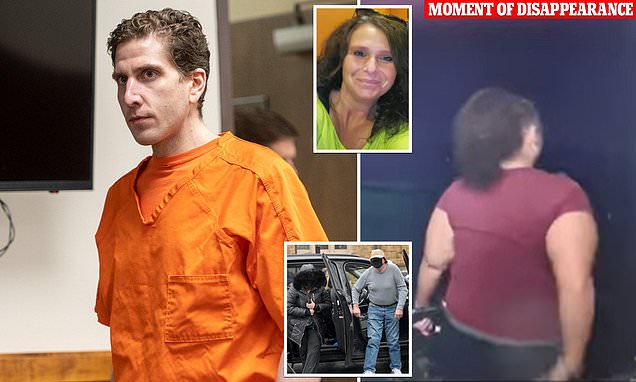- Dec 27, 2016
- 26,880
- 56,885
- AFL Club
- Western Bulldogs
- Thread starter
- Moderator
- #1,336
Here's the probable cause docs.
Last edited:
Follow along with the video below to see how to install our site as a web app on your home screen.
Note: This feature may not be available in some browsers.
The defense put a motion before the court for the preliminary hearing that was going to occur at the end of June saying that the prosecution havent handed over all of the discovery.It puts pressure on the pros to front everything up in time for an Oct trial.
Defense can and prob will motion to extend the date out and can say pros haven't given us everything as a reason.
Plea deal talks would also be happening behind the scenes I'm sure.
Its my opinion the prosecution think they have their man and arent entertaining the idea of any plea deals. With the nature of the case and the alleged crimes, would it be bad optics to accept lesser charges for the victims families?Plea deal talks would also be happening behind the scenes I'm sure.
Its my opinion the prosecution think they have their man and arent entertaining the idea of any plea deals. With the nature of the case and the alleged crimes, would it be bad optics to accept lesser charges for the victims families?
I think this will be a death penalty case...will find that out within the next 58 or so days.
The defense put a motion before the court for the preliminary hearing that was going to occur at the end of June saying that the prosecution havent handed over all of the discovery.
The prosecution then responded to the motion saying they had indeed handed over everything required including over 10,000 photos, 10,000 pages of documents, and 9,200 tips and 51 terabytes of video/audio.
The basically clapped back at the defense in their reply stating they have handed over everything relevant and if the defense is going to motion to say they havent, then please request specifically what they want - calling out the defense tactic as BS.
There may be stuff that the pros do not have that cant be handed over yet as its not in their possession (a la the murdoch trial where the GM data came in during the trial), but I will defer to the prosecution on this one and think that with the case being so high profile, the prosecution cant risk a mistrial for not fulfilling discovery requirements.
I agree that the October date probably wont be the final date, but will see...I cant see how public defenders can have the resources to sift through all of the data they have been provided so far.

Not sure if this has been posted before but Bryan perhaps connected to another murder?
- Michael and Maryann Kohberger will testify in court over the disappearance of Pennsylvania woman Dana Smithers
- The court suspects Idaho murder suspect Bryan Kohberger might be connected to Smithers because she disappeared 30-miles from his parent's home
- Smithers, 45, was last seen on May 28, 2022 on Ring footage

Idaho murders suspect Bryan Kohberger's parents called to testify
Michael and Maryann Kohberger will testify in court over the disappearance of Pennsylvania woman Dana Smithers.www.dailymail.co.uk
It's bullshit and more gossip muck by the media.
But I have a theory he’s murdered before so will find things that back my theory

So the only evidence they have then is his mobile phone location?So no victim DNA found in Kohberger's car, apartment or office.
And 3 unidentified males' DNA found on the sheath.
I'd have to say that's a blow for the State.
So the only evidence they have then is his mobile phone location?
Also no connection via social media I forgot to add. He wasn't messaging any of the victims.
Where did you get the information of the sheath having multiple people's DNA on it?Yeah the phone pings, touch DNA on the sheath, car that matches the one reported on cameras.
Also no connection via social media I forgot to add. He wasn't messaging any of the victims.
Where did you get the information of the sheath having multiple people's DNA on it?
The car matches but it could be anyone who owns that type of car, not necessarily him.
Sorry am just reading more (I should have dbl checked) there was 3 unidentified males DNA found near the victims.
One was on a glove found outside.
I'm just reading on Twitter - various lawyers I follow.
But the documents have been released where this info can be found.
But the documents have been released where this info can be found.
It was nonsense that Kohberger was messaging one of the victims?
Are you able to link to the tweets you are reading or the documents? Haven’t heard this in any of my other groups yet.
